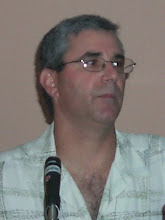Wicking Fabrics- A Primer
We often receive requests to source Coolmax fabrics. Why Coolmax? Because Coolmax has the highest brand recognition in the trade. Dupont was masterfull in its marketing campaign, and managed to address an emerging market with an improved product that would take the unfavorable connotation of polyester as a clammy, uncomfortable fiber and imbue it with a performance cache. They did this by changeing the cross sectional shape of the fiber from round to propeller shaped. The strategy was to create "channels" by which moisture could transport itself through capillary action. It was a good idea, and with alot of marketing money the idea of polyester as a performance fabric came to life. With the knowledge that channels provided a conduit to the fabric surface a second approach emerged that combined different filament sizes together in the same multi-filament yarn to create channels from the ill fitting spaces between the filaments. This approach works every bit as well (or better) than Coolmax and does not carry the premium caused by branding, as any non-branded polyester fiber can be made into a denier gradient yarn.
It is important to differentiate between filament and staple products when discussing performance fabrics. Filament fabrics have a smooth shiny surface, a cool hand, and a slinky drape. Staple products are made from chopped up filaments to simulate the look and feel of natual fibers. They have a more cotton like feel and a hairier surface. Approaches to moisture management vary widely between the two alternative systems.
For filament products their is either the capillary action approach or the absorption approach. Polyester is hydrophobic, or water hating. A drop of water on a standard polyester fabric will sit there until it evaporates. Chemical modification to the fibers can create either a temporary or pernmanant change causing the fibers to become absorbant. The changes are caused by the application of finishes during fabric processing. Some finishes will last in the range of 20-50 wash/dry cycles. Permanent change is possible with a product called Intera. These options allow the polyester to fully absorb, like cotton.
For staple products the most prevelant form of moistire management is the blending of cotton and polyester to acheive a balanced blend of absorption and rapid drying. One company has actually patented a specific blend and markets it as Dri-Release. Other approaches utilize 100% polyester staple and use an engineered fiber shape or a finish to enhance absorption.
Factors that aid in the decision making process is fabric hand, cost and appearance.

